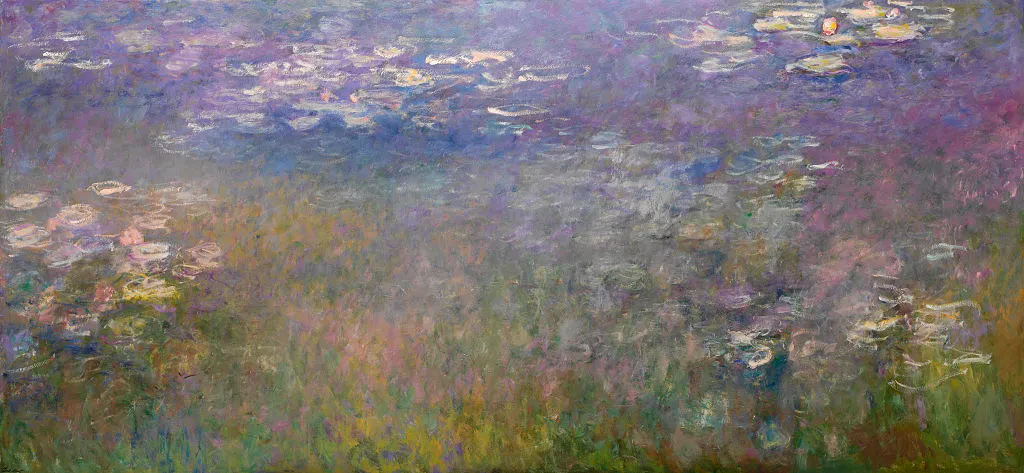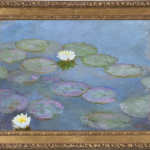
To receive Morning Links in your inbox every weekday, sign up for our Breakfast with ARTnews newsletter.
THE HEADLINES
BAD PROJECTION. The “C-Project” sounds like a shady plan hatched by shady people in a budget sci-fi film. In reality, it’s not far off. Thirty years ago, Guy Barron and his wife Nora – two of America’s leading art collectors – invited 20 of the era’s biggest artists down to Miami. As part of C-Project, the couple wined and dined the creative cohort, which included John Baldessari, Louise Bourgeois, Chuck Close, RoyLichtenstein, Dorothea Rockburne, Ed Ruscha, and James Turrell, before asking them to make hologram art, which the Barrons were banking on being the art of the future. Holographic art didn’t exactly take off but a new show at the Getty Museum in Los Angeles comprising the works made by the artists has just opened. Titled “Sculpting With Light: Contemporary Artists and Holography,” the New York Times writes that it is “an early entry in ‘PST Art: Art & Science Collide,’ a seven-month series of exhibitions throughout Southern California that’s supported by $20.4 million in funding from the Getty. It includes early-stage, preparatory versions of holograms by Baldessari, Rockburne, and Ann McCoy as well as fully realized holograms by Bourgeois, Close and Ruscha. Also featured are works by two artists who are making holograms now — Deana Lawson, the Los Angeles artist celebrated for her intimate photo-portraits of Black Americans, and Matthew Schreiber.”
SONG, YANG, QIN, HAN, YAUN… Newly released documents reveal that the British Museum received a donation worth a cool $160 million from Hong Kong businessman and philanthropist Joseph Hotung in 2022. “Hotung died in December 2021 and bequeathed the museum a celebrated collection of 246 jades spanning all the major Chinese dynasties (many of which were already displayed on long loan), 15 fine examples of early blue-and-white porcelain from the late Yuan and early Ming dynasty, 24 bronzes and other metalwork pieces, a Neolithic pottery jar and a dry lacquer head of a Bodhisattva. Nearly all these objects are on display in the Selwyn and Ellie Alleyne Jade Gallery and the Sir Joseph Hotung Gallery of China and South Asia, the latter named for Hotung’s funding of two renovations, in 1992 and in 2017,” The Art Newspaper reports. It’s unclear if any of these objects were involved in the recent scandal that rocked the museum, but the institution’s holdings should be secure now that it’s working with the National Archives to improve how it administers its records. The move comes after an internal audit found the museum was “not compliant” with the Public Records Act.
THE DIGEST
A new show by Peruvian artist Claudia Martínez Garay is finding ways to reimagine indigenous cultures, from chicken feet sculptures, 22-foot murals, and a radical reworking of a forgotten hymn at Grimm Gallery. [Guardian]
A $25 million Claude Monet water lily painting is set to make its auction debut in Hong Kong, and will headline the inaugural sale at Christie’s new Zaha Hadid-designed HQ in the Henderson building. [The Art Newspaper]
Plans to revamp the Potteries Museum and Art Gallery in the British city of Stoke-on-Trent are being drawn up after the city council was awarded several million pounds from the government and Arts Council England. [BBC]
Also in the UK, artists from Bristol are revealing their favorite hidden city gems on a new app while simultaneously showcasing their work. The “Secret App” is designed to support creative urban communities around the world, while enabling people to share their insider tips. [BBC]
THE KICKER
TAKE MY CARD. “The corporate theater is perhaps the most prolific performing art venue in America. Even the acclaimed Californian artists Ed Ruscha and Billy Al Bengston have graced its venue,” Artnet Newswrites. “In 1968, the duo dropped 1,000 copies of a photo book titled ‘Business Cards,’ which documents their efforts designing, fabricating, and ceremoniously exchanging business cards they’d made for each other. Most people feel in-demand if they manage to give all their business cards away. Copies of this tongue-in-cheek homage, however, sell for upwards of $5,000.” A copy of the card Ruscha and Bengston created appears in art critic Lucy Lippard’s archives, which now belong to the Smithsonian. The minimalist card displays Ruscha’s full name with a phonetic spelling beneath, just in case. “The bottom-most line of text reads ‘young artist.’ While this was, in part, true – since Ruscha was only 31 years old at the time – it’s also somewhat of a sly joke. By then, Ruscha had already appeared in the seminal Pop Art group show ‘New Painting of Common Objects’ at the Pasadena Art Museum, and staged his first solo show at L.A.’s Ferus Gallery. He was young, but incredibly established,” Artnet News adds.
